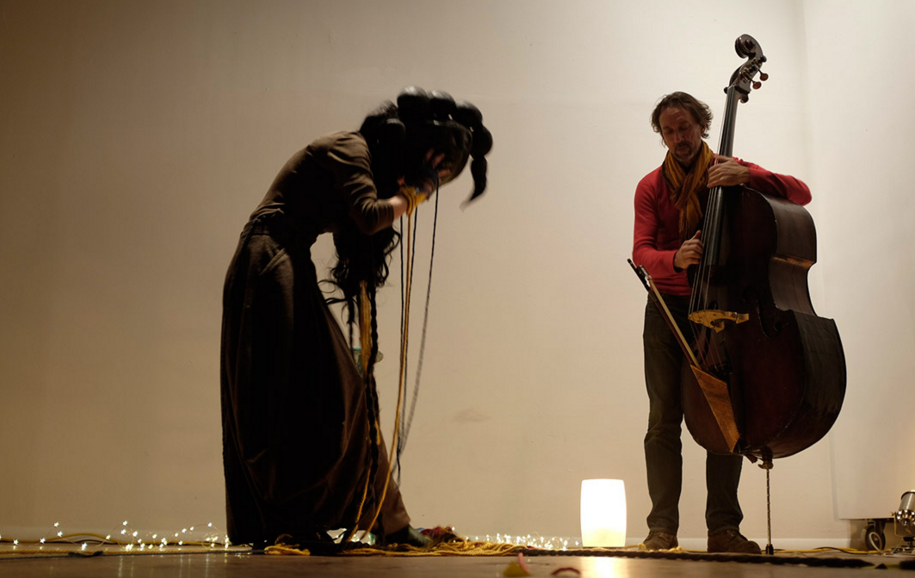April 28, 2017
My suite of texts and images NONAGON FOR THE DEAD WHO ARE ABOUT TO RISE has been published by one of my favorite journals, Numero Cinq. You can read it here. You can learn more about the project on my website here.

Quintan Ana Wikswo performing her performance NONAGON FOR THE DEAD WHO ARE ABOUT TO RISE (c) 2017. Radical Abicus, Santa Fe. with Arthur Kell on bass.
I created this ritual in response to the invisibility of resistance workers from our continent’s cultural memory – ancestors’ death, grave, and burial sites that are unmemorialized, obscured, and desecrated – specifically the activists represented by AIM, SCLC, the Black Panthers, Black Lives Matters, the Chiricahua Apaches, Idle No More, and others.
“Nonagon for the Dead who are Rising” is a call to resurrection for all agitators who continue – after death – to challenge and resist the loss of agency in our psyches, minds, and bodies. It is a ritual for the living with the purpose of transformation into beings of resistance, revolution and liberation.
A nonagon is a nine-sided polygon, represented by nine stories, nine locks of hair, and nine stones gathered from colonialist massacre sites. These stones conjure the resting sites of dead resistance activists who fought colonialism and genocide. Each of the stones are attached to me, the performer, through a network of colored woolen weaving yarns, which I use to pull apart the grave stones as I recite each of the nine resurrection texts.
As each stone is pulled away, I cut off 1/9th of my hair – invoking the cultural power of hair. I shaved my head after surviving a hate crime rape and kidnapping. At Indian Schools, Native children’s hair was forcibly shaved. Nazis shaved the bodies of all concentration camp prisoners. Scalping in many Indigenous traditions was a practice of war. Soldiers entering the US Military are required to shave their heads. Yet displaying our hair in its natural form is a key act in every resistance movement.
“Nonagon” forms a polygon of abstract conceptual rituals inhabiting the emotional and tactical landscapes of colonialism, genocide, femicide, identity predation, and our resulting anger, grief and resistance. It demands the memory of our individual experiences of survival and resistance to unite with the necessity of intersectional protection and connection. It creates a communal embodied and disembodied space with the dead who are living, the living who are dead…and the strings that weave us all together.
